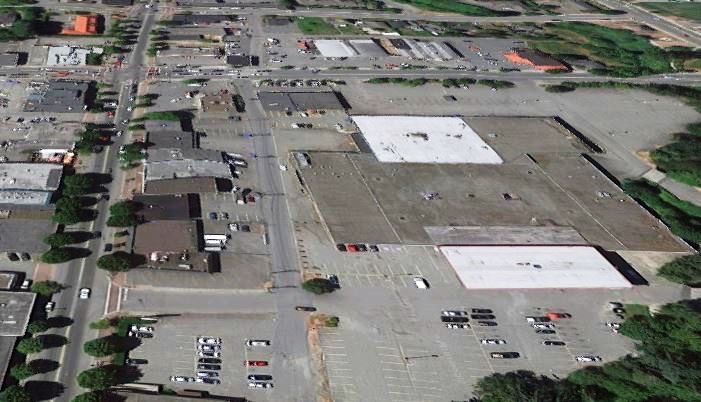One often hears of leaders of devitalized communities who passively wait for a “white knight” private redeveloper to come to town and rescue them (these are not true leaders, of course). But sometimes, real estate investors are the ones holding back revitalization.
In my (Storm Cunningham) 20 years of community revitalization consulting and workshops all around the world, I’ve encountered numerous examples of towns and cities whose future was being held hostage by a single property owner.
For instance, one of my clients about a decade ago was a town in southern Ontario, Canada. There, locals told me that a key piece of waterfront land was in private hands. Without it, the town couldn’t revitalize its downtown. That was merely a case of balancing private vs. public good, and it’s for such situations that “eminent domain” laws were created.
The more common situation is where absentee owners of vacant, blighted properties invest nothing in the asset, hoping that local revitalization eventually boosts real estate values so they can cash out. By doing so, they are sabotaging the very revitalization they hope for. In a few cases, local leaders (real leaders) make anti-blight changes to zoning, building codes, and/or taxes that motivate these economic parasites to either sell or improve their property.
Some cities are using vacant property taxes to nudge property owners of both retail and residential spaces to lease, develop or sell their properties before a short-term vacancy turns into what some cities see as blight. They are seeing varying degrees of success.
“The idea that if you tax the development, you will force the landlord into renting is complicated,” says Joan Youngman, a senior fellow with the Lincoln Institute of Land Policy. “In a hot market, the landlord might wait for a high-end renter. If the market is soft, the vacant land tax might force the landowner to allow it to fall into disrepair.”
Hartford, Connecticut tried to institute vacant property tax to spur redevelopment in 2017, but Mayor Luke Bronin refused to sign it. The city is plagued by the least expensive—and most devitalizing—use of commercial land: parking lots. “We see a sea of parking lots in a lot of parts of the city,” Hartford Councilman Julio Concepcion told the Hartford Courant. “When you’re trying to go from point A to point B and all there is is dimly lit surface parking, the perception of the city is that it’s unsafe. So we’re just trying to fill those gaps in with development — with housing or retail or whatever the market bears, and trying to make Hartford a more walkable, friendly city.”
One solution that gets closer to the heart of the problem is land value taxation (also called location value tax, site valuation tax, split rate tax, or site-value rating). In the few places where it’s been properly implemented, it has worked wonderfully, since it penalizes blight and incentivizes redevelopment. But real estate owners are usually politically powerful, and politicians aren’t generally known for their courage. As a result, this very real solution has seen little adoption.

Planned pedestrian plaza for downtown Aldergrove would be next to decrepit mall. Image via: Aldergrove Community Plan.
Today, the small town of Aldergrove, British Columbia might be experiencing such a situation. Its population hasn’t grown in years, even though it’s in one of the fastest-growing areas of BC’s Fraser Valley.
The town is spending $40 million to transform the downtown core in the hopes of attracting thousands of new residents over the next two decades.
But urban planners say they won’t get far unless they demolish an aging, decrepit mall at the centre of town. The Aldergrove Centre Mall thrived in the ’70s, but started to fall apart soon after.
Business owners want it gone, the town wants it gone, and urban planners believe the success of the town’s planned revitalization might hinge on it.
But the mall’s owners aren’t moving forward on the property.
Featured image of Aldergrove Centre Mall via Google Maps.
Read more about Aldergrove’s situation in this CBC article by Rhianna Schmunk.
See May 14, 2018 article on vacant property taxes by J. Brian Charles in GOVERNING magazine.

